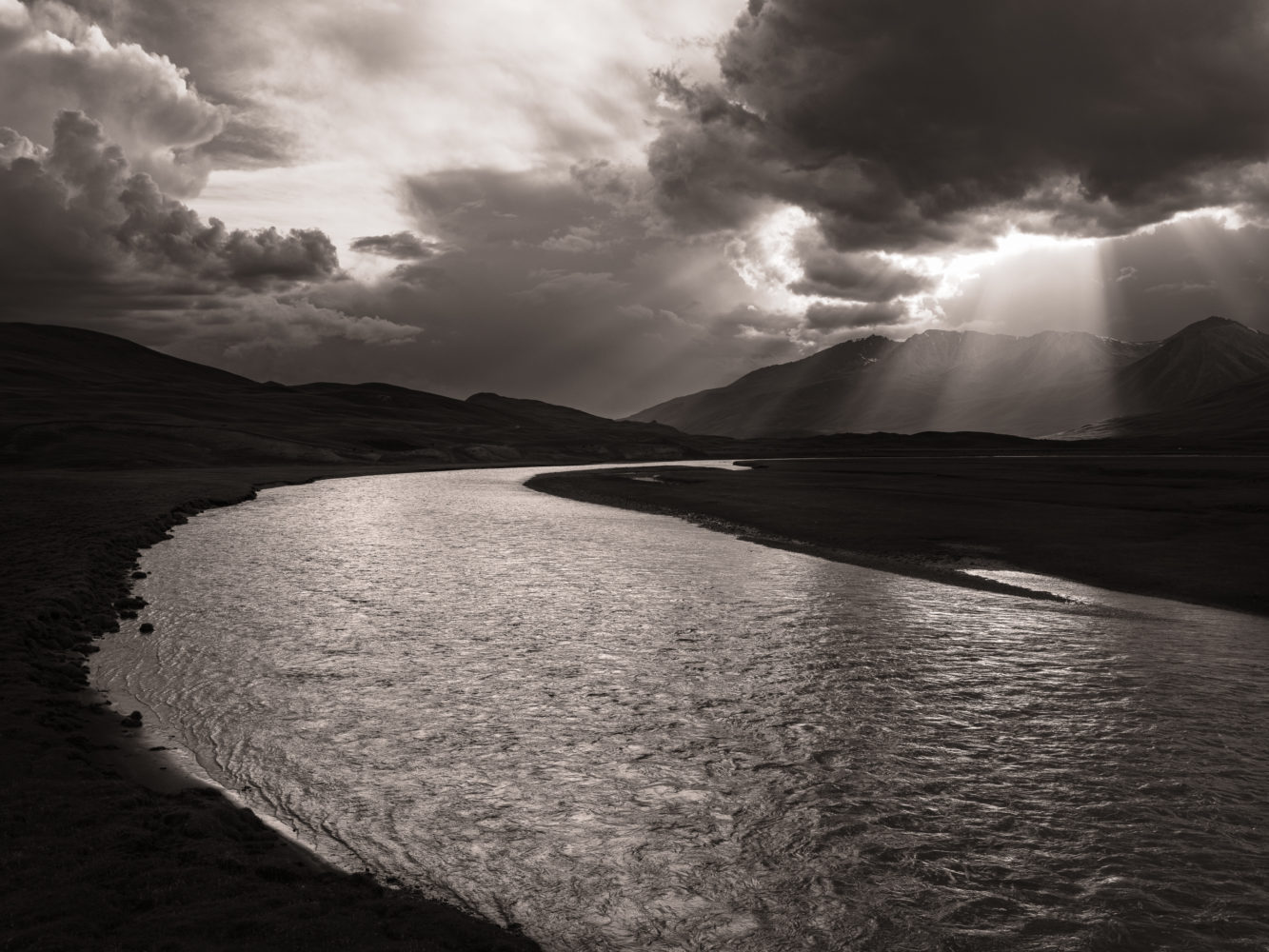
Tech: Fujifilm GFX100S camera, GF 45-100mm f/4.0 lens, Singh-Ray LB Circular Polarizer, Really Right Stuff TVC-24L tripod, Arca-Swiss D4 geared head; 1/160 sec, f/11, ISO 100.
Visit our Kyrgyzstan gallery to see more of Justin’s work
Click here to see our video about the Kyrgyzstan experience
Join Justin for a photography expedition through Kyrgyzstan
In a far-off corner of Central Asia, as far from an ocean as one can get, lies the Kyrgyz Republic, a little-known Silk Road nation about the size of Nebraska. My wife, Lena, was born and raised in this former Soviet republic (also known as Kyrgizia or Kyrgyzstan), and the childhood stories she shared with me conjured visions some sort of of post-communist Shangri-La, surely too good to be true. In summer of 2015, however, we set aside a few weeks to explore her homeland together so I could see for myself. What I found was a landscape photographer’s dream, and I quickly came to realize what an undiscovered marvel it is and what a precious set of opportunities it offers the adventurous photographer who seeks to both make new discoveries and apply their personal creative vision to the crafting of original works. One doesn’t go to Kyrgyzstan to knock off familiar compositions of those who have gone before. We go there to make personal discoveries and have a great time in one of the world’s most unknown, unappreciated, and untrammelled sublime landscapes.
The more people travel and photograph, the smaller and more familiar our planet seems to become. It’s hard to imagine keen landscape photographers making their first trip to heavily photographed destinations like the Tetons, Yosemite, or Torres del Paine, without referring at least subconsciously to the many iconic photographs they have seen from those locations. One of our challenges today is to find places where we can arrive creatively fresh and open, informed and prepared but without too many preconceived notions about what we are going to see and photograph, ready to take advantage of diverse subject matter and local seasonal conditions of light and weather to inspire compositions all our own. Kyrgyzstan is a rare and true gem in that regard, and though I have traveled all over the world from the Arctic to the Antarctic, it has become my favorite destination and the one I most enjoy sharing with others. Regardless of how much personal research one might do in advance of a visit, the keen photographers who join us on our Visionary Wild expeditions there never quite know what to expect, and I enjoy watching jaws drop as they react in more or less the same way that I did on my first visit in 2015, when I kept repeating to Lena, “This place is absolutely amazing! Why are there hardly any tourists?” Though it is my hope (a hope that is shared by many of my Kyrgyz friends) that tourism in Kyrgyzstan can be gradually and carefully developed in a limited way that minimizes impacts and preserves its many special qualities, it rightfully deserves to be recognized as one of the most beautiful nations on Earth.

Tech: Fujifilm GFX50S camera, GF 120mm f/4.0 lens, Really Right Stuff TVC-24L tripod, Arca-Swiss D4 geared head; 1/125 sec, f/13, ISO 800.
Located 1,620 miles from the nearest ocean, between the vast flat steppe of Kazakhstan to the north, western China’s Taklimakan Desert to the east, and Tajikistan and Uzbekistan to the south and west, Kyrgyzstan is composed of a series of glacier-capped ranges of the Tien Shan mountains, stepping gradually from the already impressive Ala-Archa range (topping out at 15,860ft.) just south of the surprisingly cosmopolitan capital of Bishkek (2,625ft.), toward the highest peaks of the Kokshaal-Too range along the border with China, reaching a truly Himalayan scale. The world’s two northernmost 7,000-meter peaks, Khan Tengri (23,000ft.) and Jengish Chokusu (a.k.a. Pik Pobeda or Victory Peak, 24,406ft.), tower 10,000 feet above the mountaineering basecamp established each summer on the South Engilchek Glacier, the world’s sixth-longest non-polar glacier.
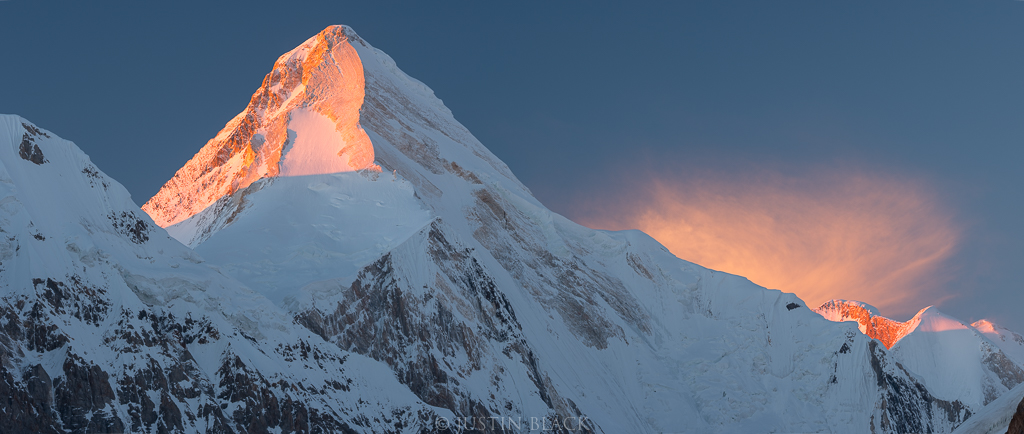
Tech: Multi-frame stitched panoramic, Fujifilm GFX50s camera, GF 250mm f/4.0 lens, Singh-Ray LB Polarizer filter, Really Right Stuff TVC-24L tripod, Arca-Swiss D4 geared head; 0.4 sec, f/11, ISO 100.
In between are mountains, alpine lakes, badlands, and valleys that variously resemble the Swiss Alps, the Tetons, parts of the Colorado Plateau and Great Basin, and the Himalayas. Outside of Bishkek and the few towns of any size, there has been little development, particularly compared to the world’s more familiar mountain regions. In the short summer, herding families take their horses, sheep, yaks, cows, and goats up into the sprawling alpine pastures, and establish a yurt camp. These grazing lands, which characterize most of the alpine valleys between 9,000 and 12,000 feet, are managed as a commonwealth – fences scarcely exist, and “no trespassing” signs are conspicuously absent from the landscape. It’s a precious privilege to be present in such an expansive and sublime place, with the knowledge that you can set off in any direction with complete freedom to move about and explore. Along the way, we encounter meadows carpeted with dense wildflowers in purple, pink, yellow, and orange, and far more edelweiss than exists in all of the Alps. Vast glaciers calve into alpine lakes. Tarns and melt-water pools reflect alpenglow on the peaks. Forests of Tien Shan fir trees point arrow-straight to the azure sky. Waterfalls tumble through gorges and from high cliffs.
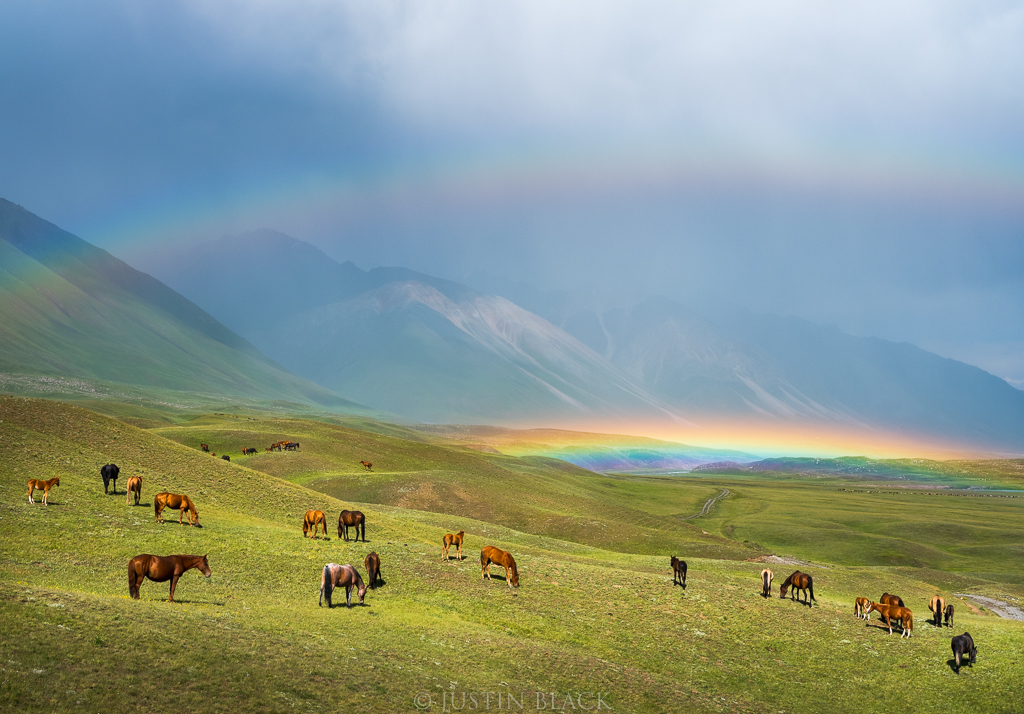
Tech: Fujifilm GFX50S camera, GF 32-64mm f/4.0 lens, 1/1250 sec, f/11, ISO 800.
Summer weather in the region is generally quite good, though the mountains do produce microclimates and dynamic local conditions. Ragged, boiling storm clouds, glowing crepuscular rays, double rainbows and solar halos, pink-orange alpenglow, frost-covered flowers, fresh snowfall, and lots of comfortable sunny days are characteristic of Kyrgyzstan at this time of year. On crisp mountain nights, the sky is often entirely free of light pollution, making this one of the best places I know for photography of the Milky Way over grand landscapes.
Kyrgyz culture and history blend seamlessly into the landscape too. Beside a crystal clear mountain stream, in a meadow where we make one of our camps, we find a boulder covered in petroglyphs depicting long-horned ibex, Marco Polo sheep, snow leopards, and the ancient hunters who pursued them. Medieval caravanserai and other historic sites recall the busy Silk Road trade routes that once criss-crossed the country. Colorful local markets full of gorgeous fresh organic fruits and vegetables; beekeepers exploiting peak alpine bloom; locals tending the countless orchards of cherries, apricots, peaches, plums, apples, and pears; artisans transforming sheep’s wool into stunning felt carpets and other traditional handicrafts; traditional athletes such as horsemen, archers, and eagle hunters – these are all part of a journey through Kyrgyzstan. So too, incidentally, is the Audi 100. At some time, this German sedan must have established quite a reputation for itself among the Kyrgyz people, so much so that I am fairly certain they have managed to import and give a second life to just about every Audi 100 ever manufactured, to be eventually rattled apart on mountain roads or lost in overly ambitious river crossings.
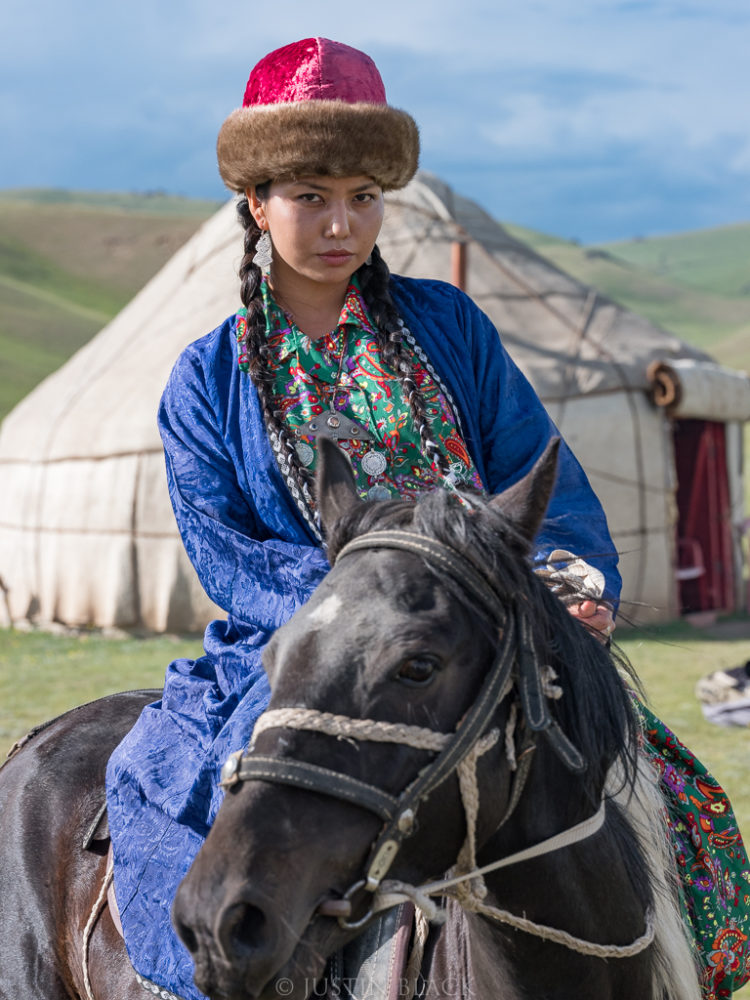
Tech: Fujifilm GFX50s, GF 120mm f/4.0 lens, 1/500 sec., f/9.0, ISO 1600
The Kyrgyz are traditionally a horse culture, having been equestrian nomads since the first millennium BCE – it’s joked that Kyrgyz babies learn to ride before they can walk – and while they have embraced a variety of ground vehicles, they are conspicuously not a boat culture. Numerous world-class whitewater rivers that would attract legions of kayakers and rafters in the USA instead run wild, free, and unpaddled. Even the waters of Issyk-Kul, a vast mountain-ringed saline lake with a surface area about thirteen times the size of Lake Tahoe (it is the world’s tenth largest lake by volume), see hardly any boat traffic, apart from the odd fisherman’s skiff or rented jet ski at one of the lakeshore resorts. Parts of the shoreline were developed as a beach holiday destination during the Soviet era, and the resorts there – now updated and modernized to varying degrees – represent the main concentration of tourist destinations in Kyrgyzstan, primarily utilized by vacationers from the capital or nearby Almaty, Kazakhstan’s largest city.
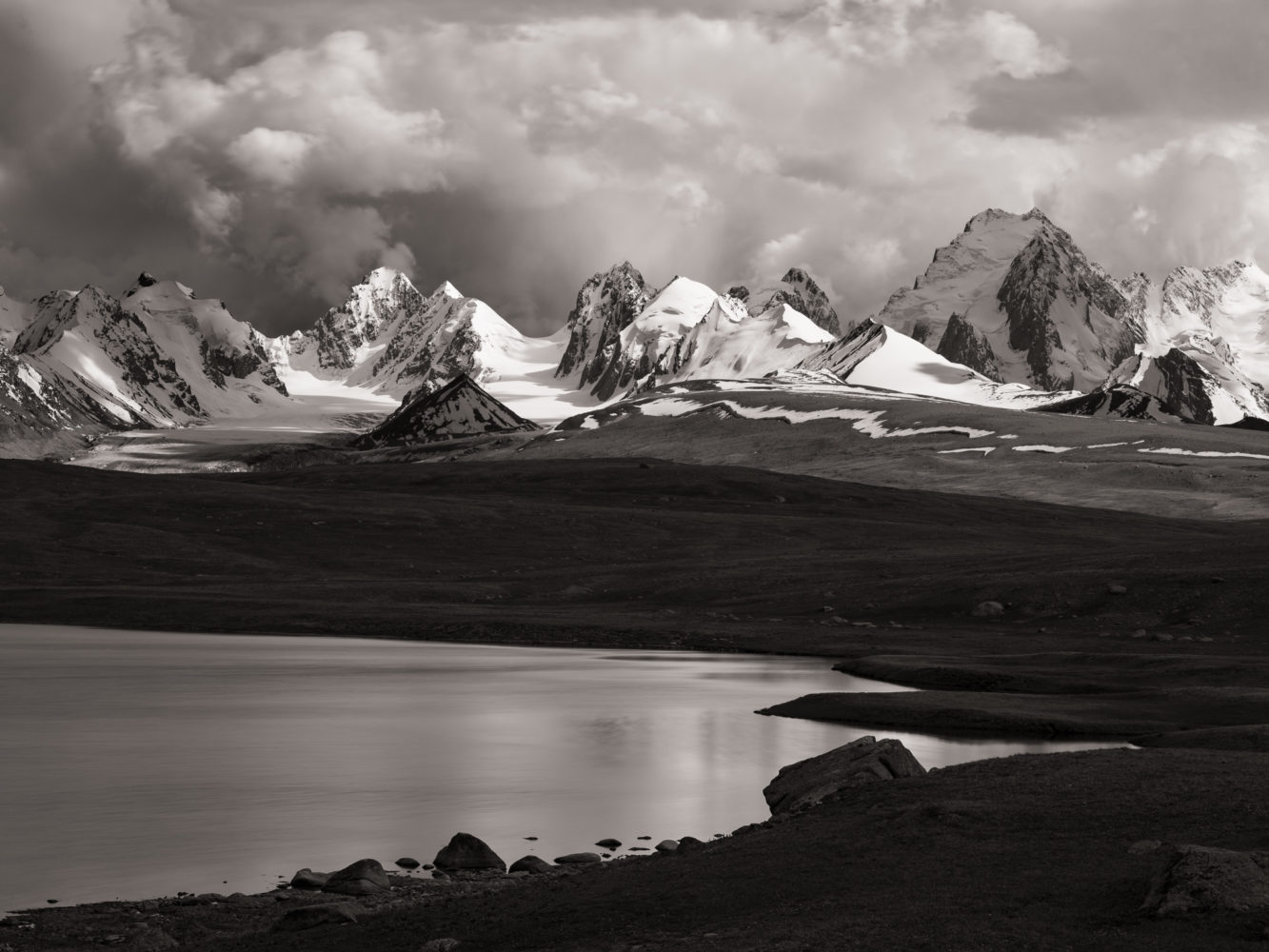
Tech: Fujifilm GFX100, GF 120mm f/4.0 lens, Singh-Ray LB Polarizer filter, Really Right Stuff TVC-24L tripod, Arca-Swiss D4 geared head; 10 sec, f/16, ISO 100.
Meanwhile, I prefer to spend my time traveling through the more remote, less populated, little-visited parts of Kyrgyzstan, though availability of accommodations, road conditions, and restricted access to regions near the border with China present distinct logistical challenges. Though Bishkek offers some excellent European-grade business class hotels, and there are a small handful of nice hotels scattered around the country at which I am happy to host guests, when traveling in the mountains of Kyrgyzstan, a bed, a hot meal, and a roof overhead means either a yurt camp run by a local family or tent camping. We use “best available” options, including our own very comfortable tented “glamping” camp, and an established mountaineering base camp. Another option when passing through towns and villages are homestays with local families, organized through the Community Based Tourism organization (CBT), and though we don’t use these on our Visionary Wild trips, the Kyrgyz people are extremely hospitable hosts, and I would wholeheartedly recommend CBT homestays for individuals, couples, or small families.

Tech: Fujifilm GFX50S camera, GF 120mm f/4.0, 1/2500 sec., f/11, ISO 800.
While flying to Kyrgyzstan is easy, with excellent connections by air via Istanbul, Dubai, and other regional hubs, transportation and access to the wildest landscapes are another matter. Kyrgyzstan’s paved highways are very good, but once we head into the mountains or remote valleys, the roads quickly switch to dirt, and the degree of maintenance can vary widely. It’s not uncommon to have to go off-road around a washed-out section of road from time to time, or even cross small rivers. A good 4-wheel-drive vehicle with high clearance is a must, and a local guide / driver who knows the route and who can also serve as an interpreter is highly recommended. Some of the locations we visit in the border regions near China require a special permit for access, and due to their limited access and remoteness, they remain excellent wildlife habitat for Asiatic grey wolves, snow leopards, Marco Polo bighorn sheep, ibex, golden eagles, lammergeiers, marmots, and other fauna, some more easily sighted than others. Getting to some of my favorite locations takes special arrangements unless one wishes to spend several days trekking. To get to Khan Tengri basecamp, for instance, we arrange private flights in and out using a large Russian Mi-8MTV transport helicopter, and in another location where we visit glacier-fed lakes beneath a particularly spectacular group of high peaks, we arrange for a ride in a rubber-tracked Swedish personnel carrier designed for crossing tundra and bogs with minimum impact. Over the course of several trips that I’ve co-led with Lena and photographer Jerry Dodrill (who also worked with me and Galen Rowell at Mountain Light Photography around the turn of the century), we have sorted out the various complexities to create a seamless experience.
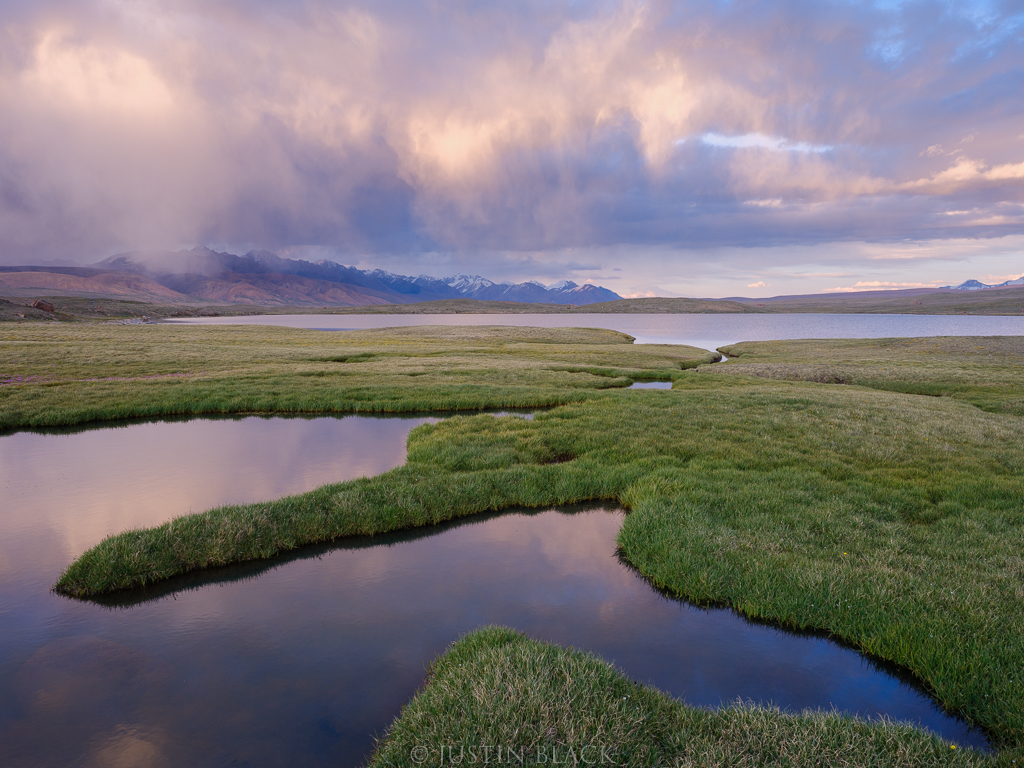
Tech: Fujifilm GFX100S, Singh-Ray LB Polarizer filter, Really Right Stuff TVC-24L tripod, Arca-Swiss D4 geared head; GF 30mm f/3.5 lens, 1/30 sec., f/16
Logistical challenges aside, you’re wondering, “Is it safe?” Often, when I mention that we travel to Kyrgyzstan every year, the response is “Kurdistan?!? You lead trips to Kurdistan?!?” in reference to the disputed trans-boundary lands populated by the Kurdish ethnic group in Iraq, Iran, Syria, and Turkey. To be clear, the Kyrgyz people have nothing to do with violence in the near east, Afghanistan, etc., beyond hosting a U.S. military air base at their international airport from December 2001 to June 2014, providing cargo and logistics support for then U.S. forces then operating in Afghanistan. In fact, when I am in Kyrgyzstan, I am statistically safer than I am in the USA. Whether I’m at a hip café in downtown Bishkek surrounded by tech-savvy university students, or spontaneously invited in for tea by a local family in a small village (seeking nothing in return, because that’s just how the Kyrgyz are), or photographing a shepherd on horseback who is all too happy to have his portrait made by a western visitor, I allow myself a bit chuckle at the notion anyone could find this “Stan” scary. Frankly, I have always been impressed by Kyrgyz hospitality, and have never even felt as if I was being treated as a foreign tourist. Rather, I have always been treated as a welcome visitor and fellow human being. The Kyrgyz people are a critical component of my love for the place. The Kyrgyz government is also welcoming, offering visa-free entry to nationals from over sixty countries, including the USA and many developed nations.
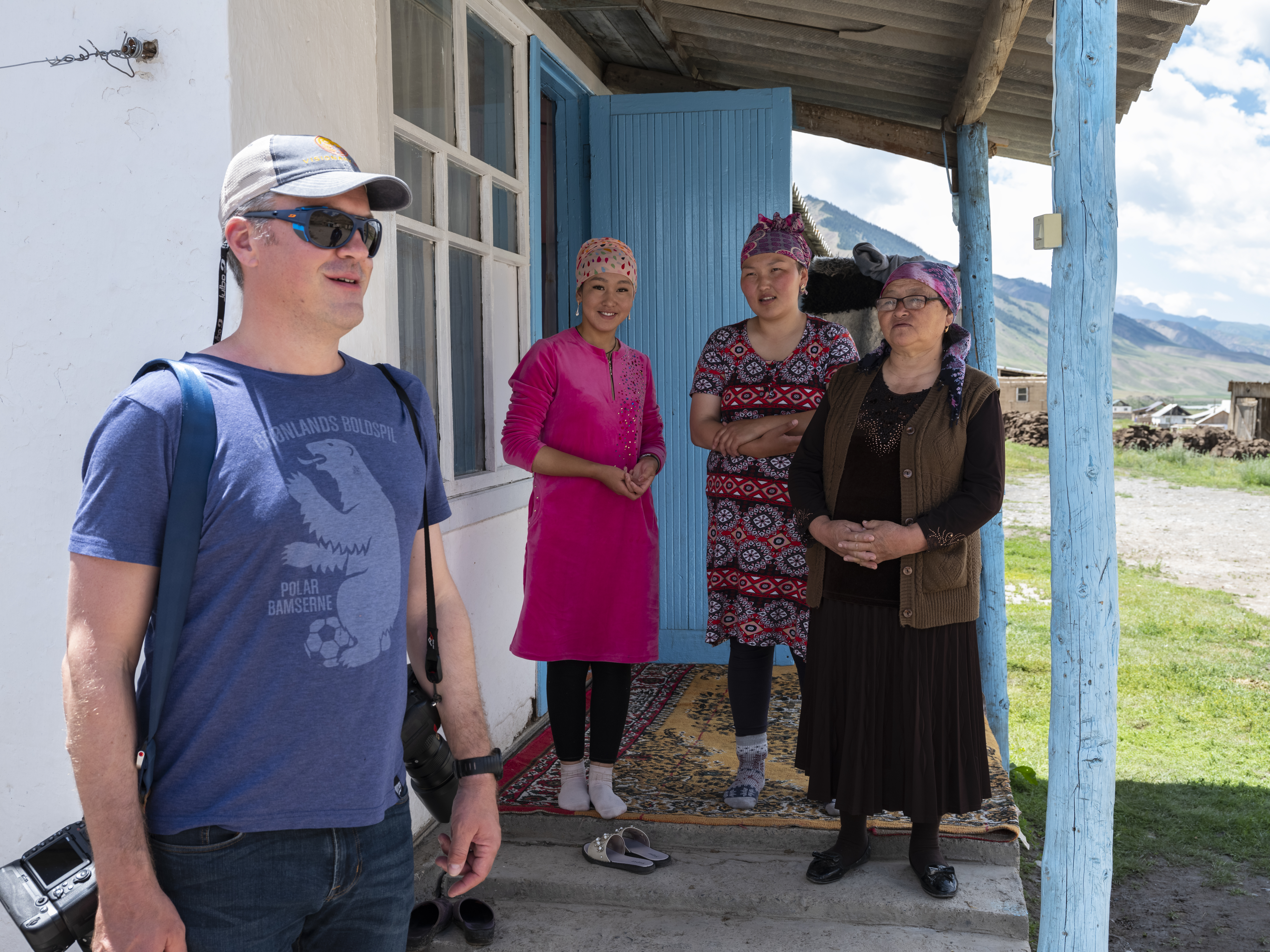
First mentioned in Chinese texts dating to 201 BCE, the Kyrgyz are the oldest extant ethnic group in Central Asia. In that time, their population drifted from what is now western Mongolia, into central Siberia, across the Kazakh steppe and into what is now the Kyrgyz Republic and the Xinjiang region of western China. Despite being introduced to Islam by Silk Road traders as early as the 7th and 8th centuries CE, the Kyrgyz carried on their traditional religion of shamanism and ancestor worship for another thousand years, until Islam (of the Sunni Hanafi school) became widely adopted in the 17thand 18th centuries. Soviet rule in the 20th century led to the resettlement of a significant Russian Orthodox minority into the region, particularly during World War II as the western Soviet republics were evacuated to get out of the way of the Nazi invasion. Due to the official atheism of the Soviet state, along with this integration of cultures, religion was downplayed and became more a personal matter rather than a dominant feature of society, and this remains the case to a large degree. The bottom line is that Kyrgyzstan today is a tolerant nation when it comes to religious differences, to the extent that Israeli Jews represent a conspicuously significant proportion of foreign tourists.
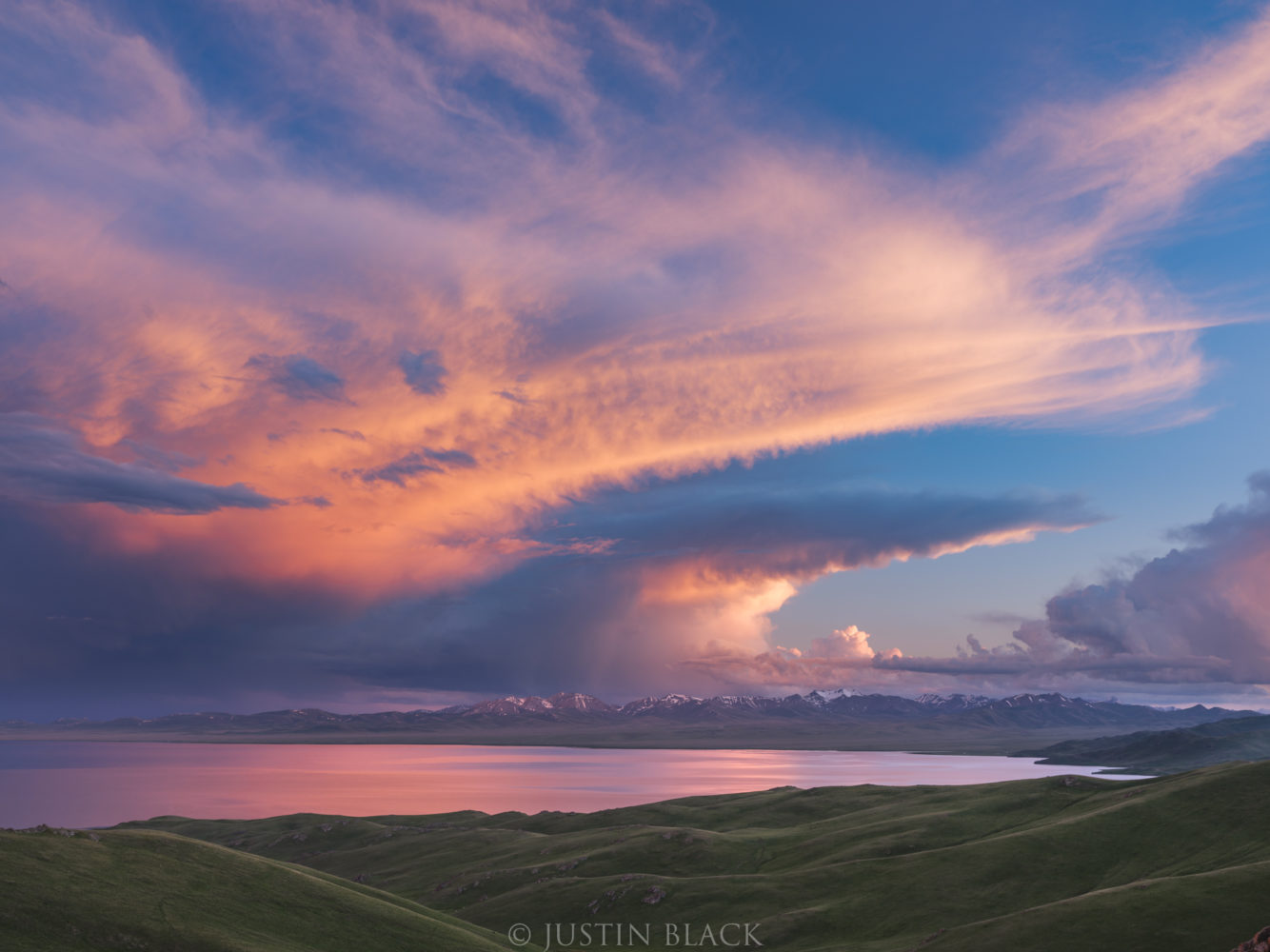
Tech: Fujifilm GFX50S camera, GF 32-64mm f/4.0 lens, Really Right Stuff TVC-24L tripod, Arca-Swiss D4 geared head; 1/2 sec., f/11, ISO 100.
The cuisine of Kyrgyzstan also displays the intersection of Silk Road cultures with Russian influences, with traditional shashlik kebabs, plov (Central Asian rice pilaf with lamb, onions, and carrots), and manti (dumplings) appearing beside Russian salads, borscht, and pelmeni on restaurant menus. They cook a mean steak too, and, while I’m not sure the Kyrgyz are convinced that people who don’t eat meat actually exist, their cuisine can be adapted rather well to vegetarians and vegans. In summer, quality organic produce is abundant. The local cherries, apricots, peaches, pears, raspberries, strawberries, and melons are among the best I’ve ever tasted. Apricot preserves and fresh raspberry jam are welcome standards on the breakfast table. Honey production is also something of a national obsession, with beehives chauffeured around the mountains on flatbed trailers, following the peak of alpine wildflowers. Kyrgyzstan produces enough honey every year to fill a container two meters wide, one meter deep, and eight kilometers long. That’s a lot of honey, and it’s some of the best in the world. Herding families also milk their cows to make cream, butter, and ayran (a yogurt beverage), and their mares are also milked to brew kumis, a somewhat effervescent and mildly alcoholic beverage fermented in a fire-toasted wooden churn, with a flavor that I can only describe as slightly smoky Greek yoghurt thinned-down with seltzer water. I happen to find it very light and refreshing, but there is no doubt that it is an acquired taste. Meanwhile, back in cosmopolitan Bishkek, one can find great French bakeries, American-style espresso bars, craft brewpubs, and a range of excellent restaurants serving international cuisines.
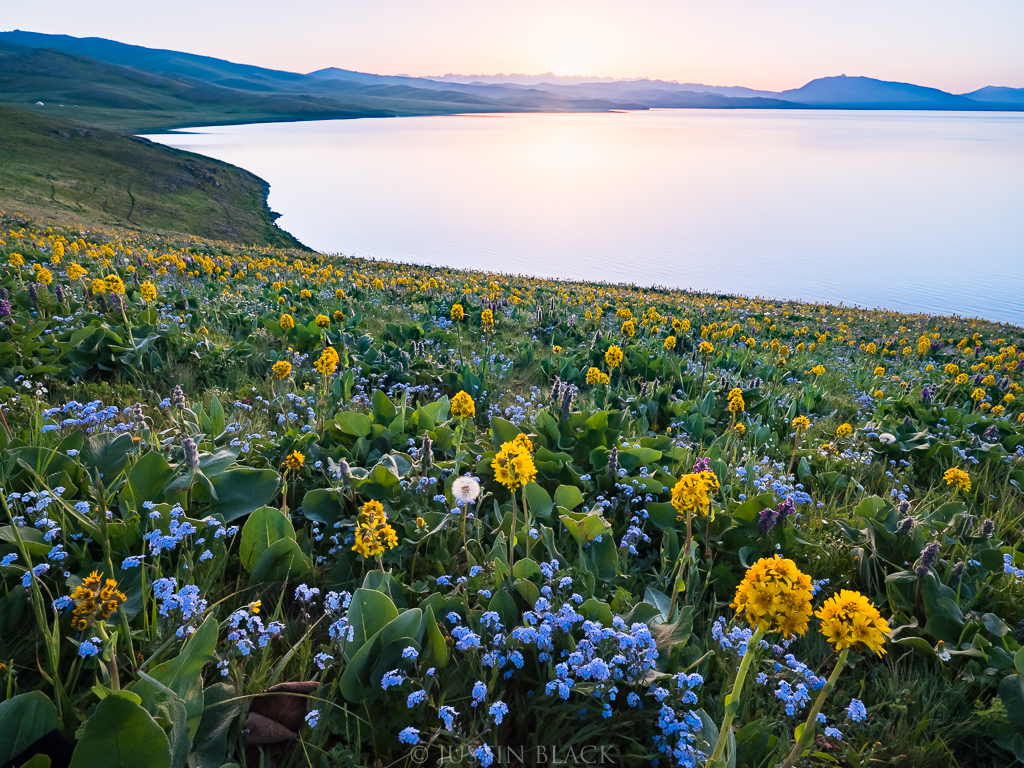
Tech: Fujifilm GFX50S camera, GF 23mm f/4.0 lens, Really Right Stuff TVC-24L tripod, Arca-Swiss D4 geared head; 1/160 sec., f/22, ISO 800
So, it’s no surprise that Lena, Jerry, and I are in love with Kyrgyzstan and that we look forward to every chance to return, but what has surprised us is that a surprisingly high percentage of those who travel there with us once choose to return for a second, third, or even fourth visit. Many Visionary Wild clients travel with us regularly, but this level of interest in returning to a destination is unusual, particularly in consecutive years. All I can say is that Kyrgyzstan delivers the goods on many levels: as a world-class photographic travel destination, a place to get into the mountains off the well-traveled trail and away from it all, and a place that tells the story of the Silk Road and connects the histories of the Turkic Central Asian cultures with those of the Mongols, the Chinese, and the Russians. Kyrgyzstan is a welcome reminder that there are still places on this planet where a total stranger is eager to invite you into their home for tea, just because it’s the neighborly thing to do.
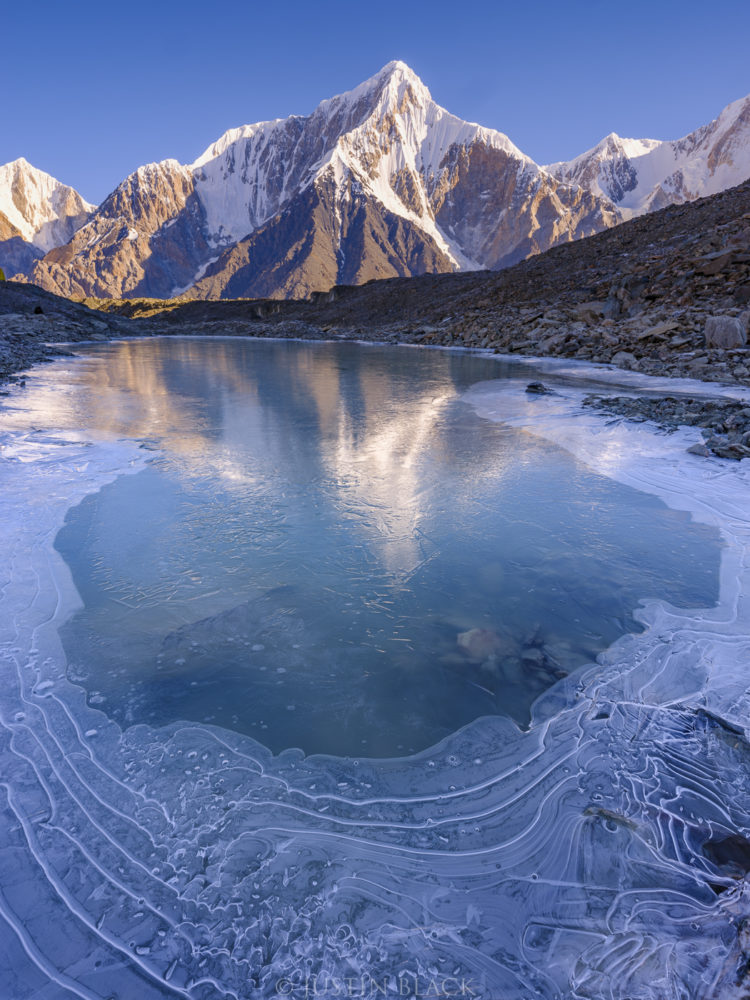
Tech: Fujifilm GFX50S, GF 23mm f/4.0 lens, Really Right Stuff TVC-24L tripod, Arca-Swiss D4 geared head; 1/50 sec., f/22, ISO 100
Visit our Kyrgyzstan gallery to see more of Justin’s work